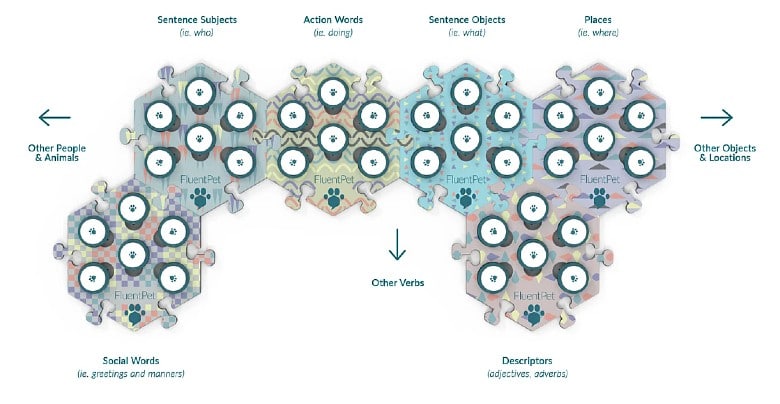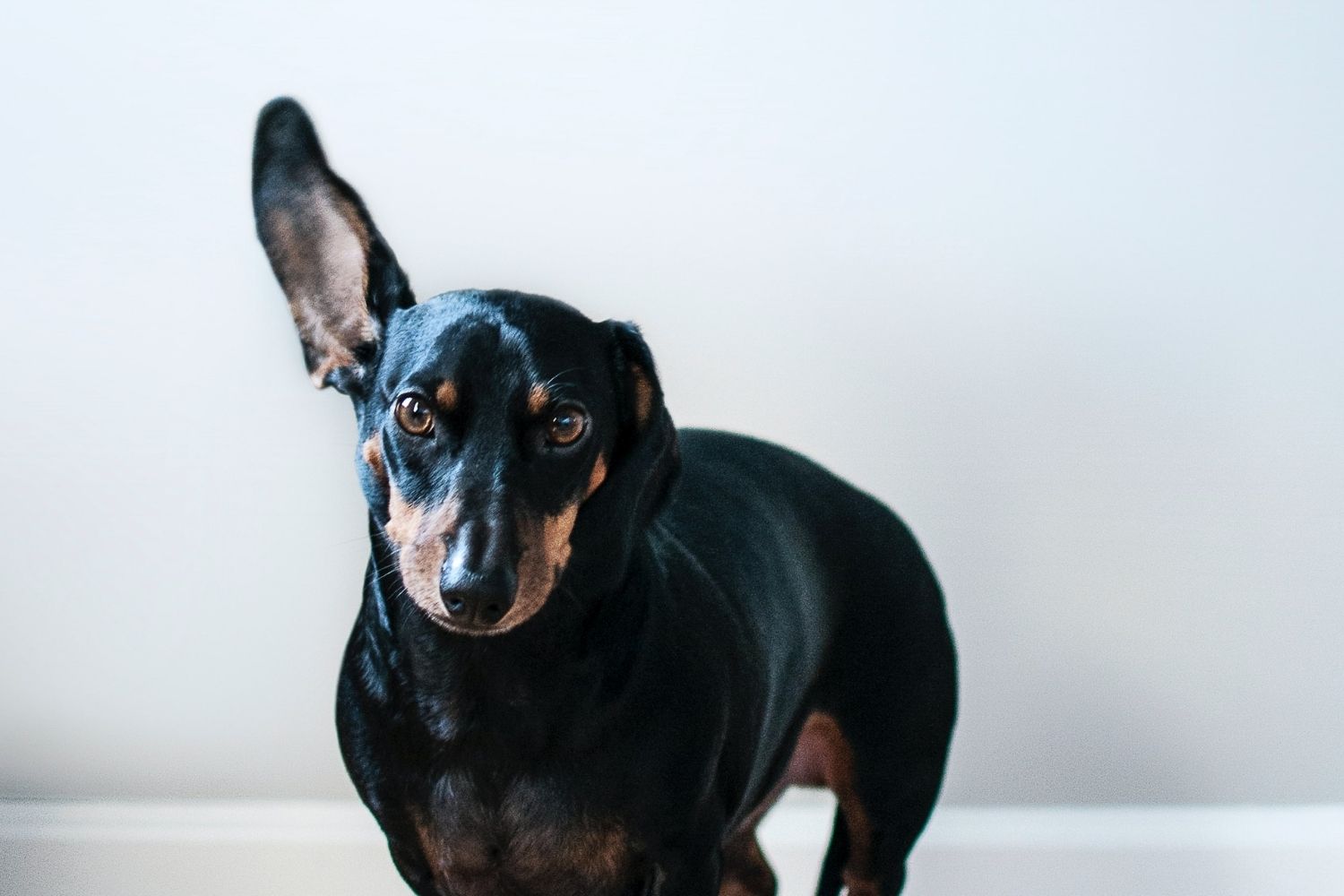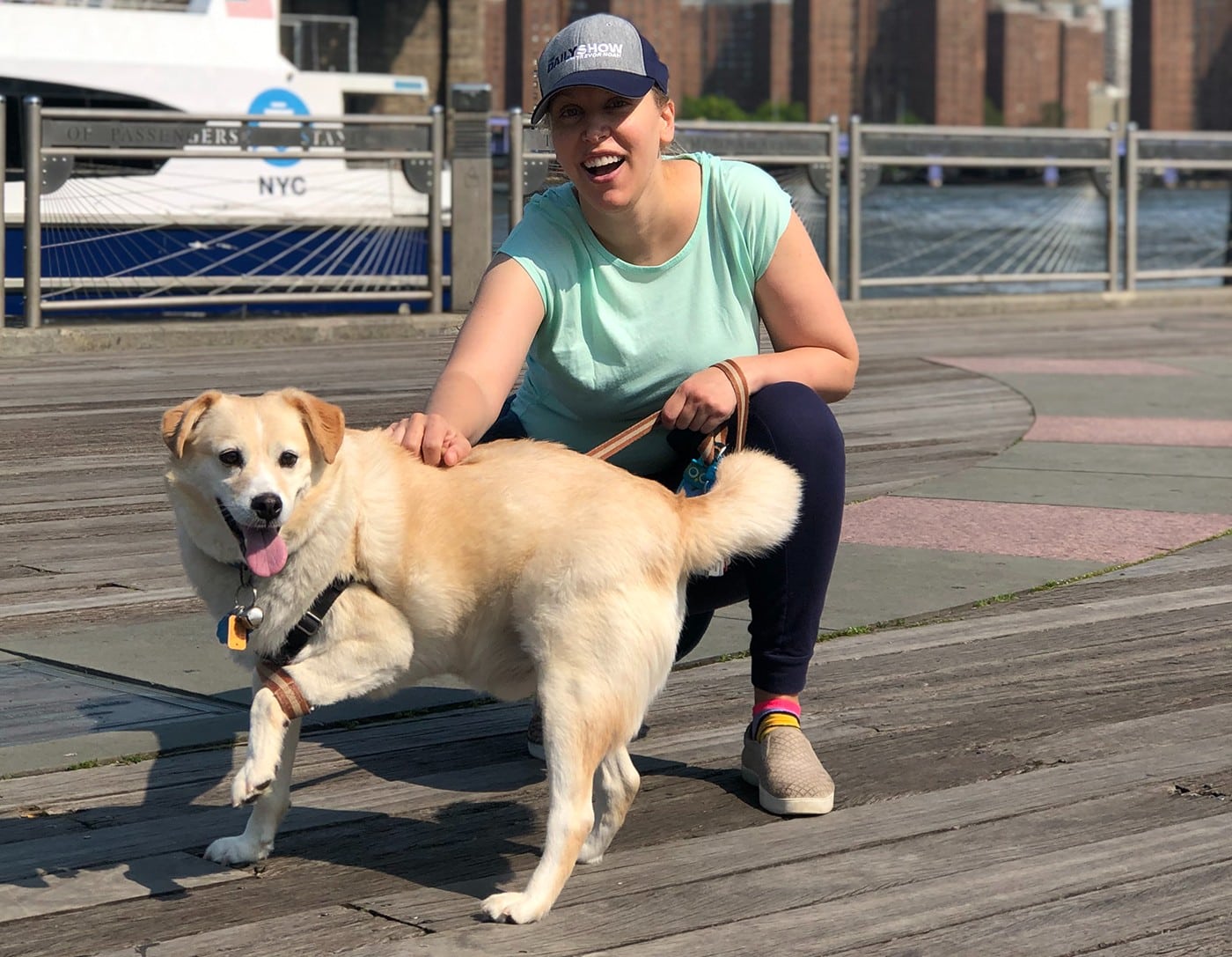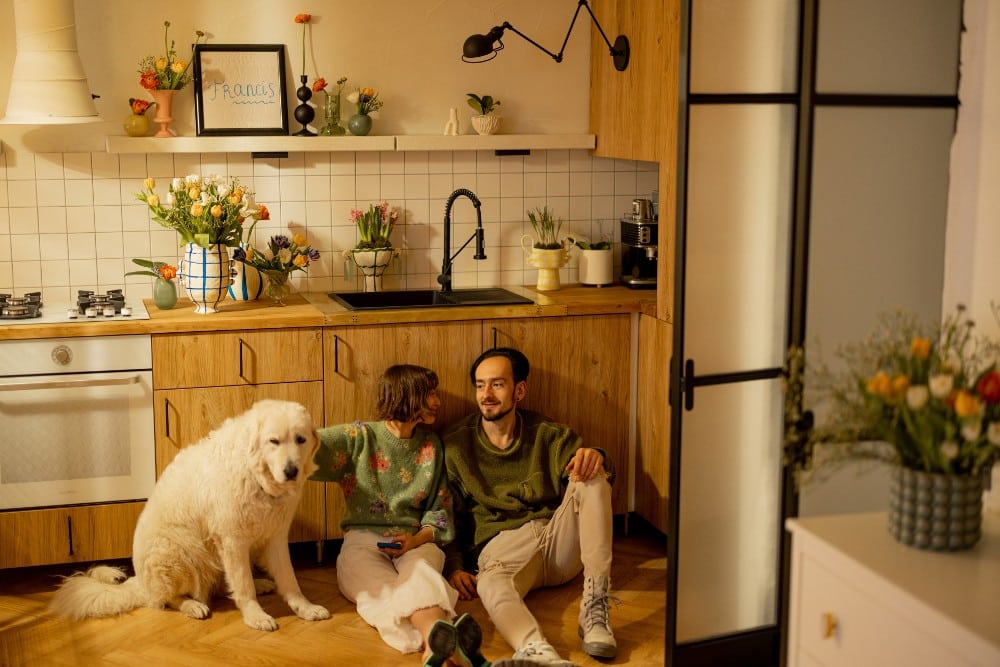Ever had a one-sided conversation with your dog and wished she could speak to you? Well, you may not have to wish anymore, thanks to one company.
Cognitive scientist Leo Trottier founded FluentPet, a company aimed to discover dogs’ untapped potential by teaching them to communicate via a word board.

“They [dogs] might well have had this desire and some ability to communicate sophisticatedly for thousands of years, and it’s just been the case that they haven’t had the means to do so until now,” Trottier says.
Indeed, when it comes to communicating with our dogs, there has (and will continue to be) hurdles. Dogs respond to verbal commands from us –“sit,” “stay,” and, “lay down” to name a few — after being taught. They also look to us for non-verbal signals, like eye contact, to help determine what we want. We, too, look for both verbal signs (e.g. barking and whining) along with non-verbal cues, such as pacing, to try and understand our pup’s needs.
But with FluentPet, they are trying to take lot of the guesswork out of what our four-legged companion is trying to tell us.
Using a word board organized by categories, humans can record commands on sound buttons, like “outside,” “play,” and “potty.” Through training, dogs can push these buttons to communicate their needs and wants. As their vocabulary expands, more buttons can be added.
One customer, a dog named Bunny, knows 84 words (and counting!) and can “talk to her human, Alexis Devine.
“When she has something to say, she’ll approach the buttons and I then turn those into teachable moments,” Devine told us earlier this year. “Learning that happens is dictated by her, which makes it a lot more fun and engaging for her.”
Related: Meet Bunny, the ‘Talking’ Dog Sensation
Some of the other dogs who are learning to “talk” using FluentPet include: Bastian, Beacher, Copper, Mila, and Polly — all of whom have had their learning progress posted on social media and amazed pet parents and scientists alike.
Trottier has been exploring how to better understand dogs’ thoughts and feelings since starting CleverPet in 2014, a sort of high-tech puzzle. The goal is to keep dogs mentally stimulated while home alone.
But it wasn’t until Trottier came across videos of speech-language pathologist Christina Hunger teaching her dog, Stella, how to “talk” using an augmentative- and alternative-communication device she created herself. He, like many others, was blown away by Hunger’s discovery of a new way to communicate with dogs. After spending years studying how dogs think, Trottier decided to utilize his background in cognitive science and artificial intelligence to further explore dogs’ minds by developing his very own board, FluentPet.
Using a hexagonal tile and button system, Trottier took a page from a proven concept that was used in the early 1900s by a deaf American teacher, Edith Mansford Fitzgerald. By creating a system that organized words into categories, Fitzgerald was able to teach hearing impaired students how to construct grammatically correct sentences. So, instead of using a square grid, Trottier wanted to use a hexagonal tile grid organized based on parts of speech. All words are categorized by “who,” “doing,” “what,” “where,” “descriptors” and “social words.”
Related: Man’s Best Friend No More? Study Reveals Dogs Share a Stronger Bond With Women.

There are several word board options to choose from, such as “Tester Kit,” “Get Started,” “Basic Vocab” and “They Can Talk.” From there, you can expand to however many you new word buttons want. Word boards range in price from $29.95 to $195.95.
Now with thousands of humans having embarked on a journey to help their canine companions learn to communicate with them using FluentPet, Trottier decided to create They Can Talk, a community-generated website to help people teach dogs how to use buttons. It is available for all to read tips, learn tricks, understand the do’s and don’ts, and how-tos for modeling the most common first concepts.
They Can Talk is also used to study the phenomenon of pet button-based communication. Trottier is in collaboration with Bunny’s mom Devine and the Canine AAC Test Pilots group. Together, they want to examine the incredible capabilities of non-human language in animals and their human’s devotion to teaching.
Before Stella, Bunny and friends using word boards, there have been a few extraordinary cases throughout recent history of dog communication. For example, a Border Collie named Chaser shocked the world when it was discovered she could understand more than 1,000 words and simple sentences. There is also another Border Collie, Rico who was able to correctly identify over 200 different toys by name.
While astounding, researchers have carefully questioned when animals have displayed language-like abilities since Clever Hans, a horse who was thought to be able to successfully do math in the early 1900s. Clever Hans, in actuality, was able to read human behavior really well when he noticed people appeared more relaxed as he tapped his hoof to the correct number.
They Can Talk’s website states, “The aim of our research here is to figure out: is what we’re seeing clever dogs or merely Clever Hans?” The team is studying if dogs can truly understand and grasp the concept of language and whether they can be trained to do so, or if they’re just pressing buttons based on positive reinforcement and we’re overestimating their abilities.
Related: The First Command You Should Teach Your Dog to Build a Lasting Bond
Dogs like Bunny and Stella have been widely recognized for their learning abilities with their buttons. Bunny currently has over 80 buttons on her FluentPet wordboard, and Stella, who uses her own device, knows over 45 and can create phrases up to five words long.
So, how are they so gosh darn good at communicating?
Trottier explains some dogs may have an advantage due to their age, breed, and how dedicated their owner is to teaching them. He says, however, there are many factors they have yet to discover.
“We don’t know the limit of this, so we’re getting a sense of those things…” Trottier says. “There’s a million of things we don’t know. We would love to be able to max things out, I would say.”



















